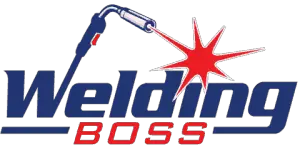This post contains affiliate links to products, services, or education. We may receive a commission for purchases made through links.
Selecting the right welding rod can be quite a headache since there is certainly no universal electrode for welding in every circumstance. We have saved you at least a few headaches by creating a comprehensive guide to selecting welding rods. How Do I Choose the Right Welding Rod?
To choose the right welding rod, you need to:
- Consider the base metal(s) you will be welding
- Know about current and polarity
- Know about the tensile strength of metals
- Know about welding positions
- Familiarize yourself with the numbering system used to describe electrodes
In this guide to choosing a welding rod, you will find a simplified explanation of the numbering system that is used to describe welding rods. You will also find guidance on which welding rod is best suited for welding a variety of metals including cast iron, cast steel, mild steel.
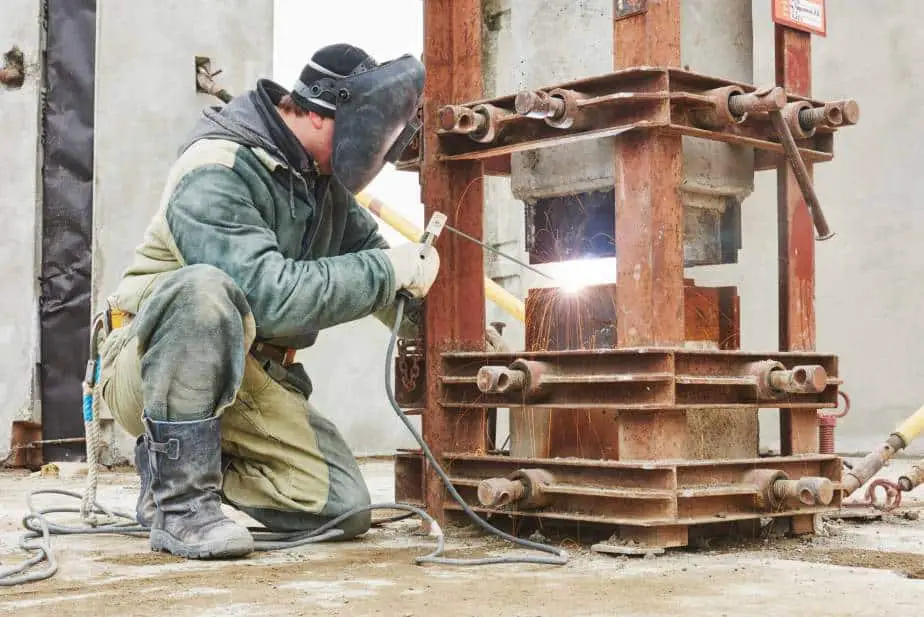
Also, since your going through the info on how to choose the correct welding rod, you should put in the time to store them correctly. Do your self a favor and see our recommended welding rod storage post here.
Are You Welding with An AC Machine?
Before you start welding, it is critical to think about polarity. When you turn on your welding machine, an electrical circuit with a negative and positive pole is created.
Ensuring proper polarity is the difference between forming a strong, consistent weld and forming a poor weld characterized by a lack of consistency and excessive spatter, according to the Tulsa Welding School.
Welding machines using alternating current (AC) operate with a current that consistently changes between negative and positive polarities, following the motion of a sine wave.
AC welding machines are marketed towards beginners because these machines come at a low cost.
There are also circumstances in which it makes more sense to operate an AC welding machine, regardless of the machine operator’s level of expertise.
AC welding machines are often used in:
- Shipbuilding
- TIG welding aluminum, due to higher temperature requirements
- Welding magnetic parts
What Kinds of Welding Rods Work with AC Current?
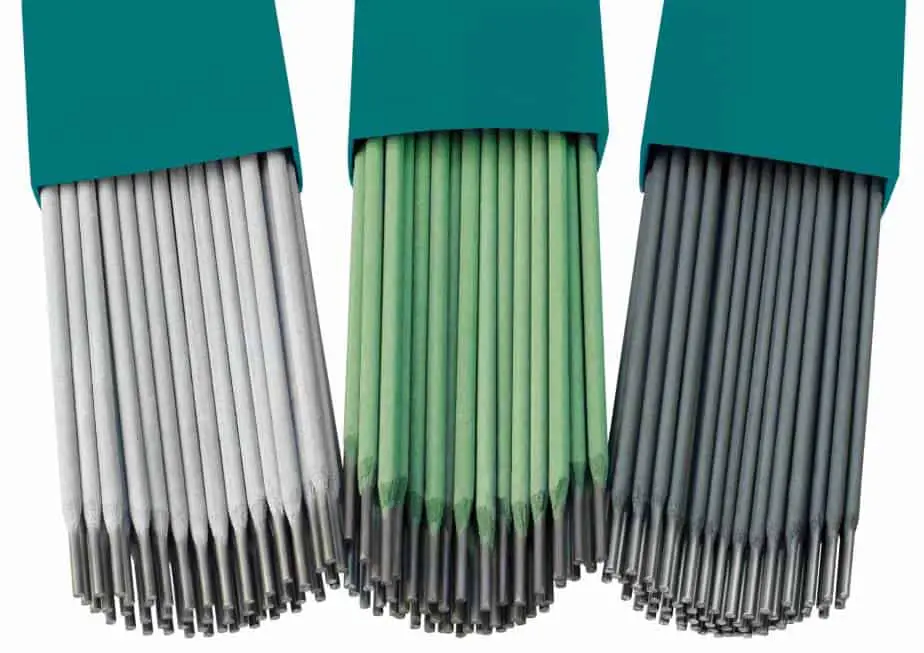
The welding electrode you choose will depend upon whether or not you will be looking to utilize alternating current. There are some electrodes that can be used with both DC and AC current. However, 6010 electrodes can only be used with DC current.
When using alternating current, one electrode you can use is the 6011 electrode. This type of welding rod will produce an arc capable of cutting through corroded or unclean metals, making it a popular choice for those doing maintenance/ repair work.
Are You Welding with A DC Machine?
Direct Current (DC) welding machines operate with a current that is under the same polarity throughout the process. The result of welding with DC current is a more stable arc characterized by less splatter along the weld bead. The end product is much smoother.
Some even say that it is easier to learn DC welding, although AC current is commonly used by beginning welders due to the cost of equipment.
What Kinds of Welding Rods Work with DC Current Machines?
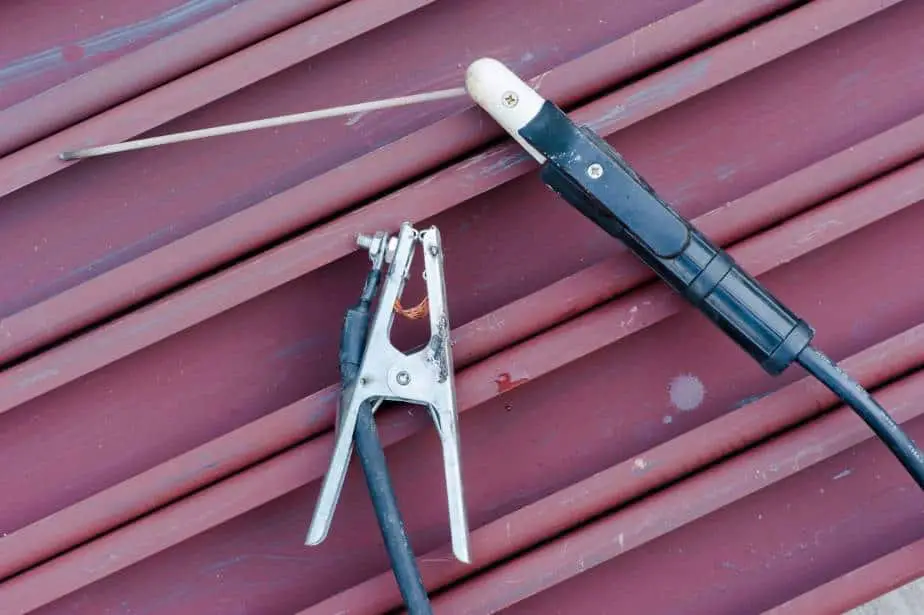
6010 electrodes are exclusively-compatible with DC current. You can often find electrodes compatible with DC current by simply searching for “DC welding rods” online since electrodes are often marketed in such a manner.
Pay attention to the coating material of the welding rod. If the electrode is made of cellulose sodium then it can only be used with DCEP (Direct current, positive polarity), as is evident in this guide from Miller Electric.
Meanwhile you can use electrodes with coatings consisting of either titania potassium or iron powder titania with AC current and DC current of either polarity. I will dive into more specifics on choosing welding rods for specific purposes, in the succeeding sections of this article.
What Size Welding Rod Should I Use?
Typically the thickness of the welding rod should be matched with the thickness of the metal you are working with, as is recommended by Summit College.
You may find a keychain metal thickness gauge, such as the one made by YESWELDER, helpful for finding the thickness of the metal you plan to be working with.

The amount of current a welding rod can safely handle depends upon its diameter.
You can find welding rod size charts online that show the relationship between welding rod diameter and amperage, including this one produced by Firepower.
You can see in the chart that the welding rods range in size 5/64” in diameter to 5/32” in diameter.
The chart also shows the corresponding recommended plate thickness of the base metal that you will be welding.
Keep in mind that this is just an example of a chart from one company, to show you the relationship between welding rod diameter and the required amperage ratings.
You will notice in this chart put out by Island Supply Welding company that there are welding rods ranging from 1/16” in diameter all the way up to 5/16” in diameter. Their chart looks something like this:
| ELECTRODE DIAMETER(THICKNESS) | AMP RANGE | PLATE |
| 1/16″ | 20 – 40 | UP TO 3/16″ |
| 3/32″ | 40 – 125 | UP TO 1/4″ |
| 1/8 | 75 – 185 | OVER 1/8″ |
| 5/32″ | 105 – 250 | OVER 1/4″ |
| 3/16″ | 140 – 305 | OVER 3/8″ |
| 1/4″ | 210 – 430 | OVER 3/8″ |
| 5/16″ | 275 – 450 | OVER 1/2″ |
The amperage ranges in the second chart are similar to those in the first. The general trend is this: electrodes with a low diameter will only be able to support a low amount of current (amperage).
This is not the end all be all when it comes to selecting electrodes, I will go through more factors you need to consider.
What Do Welding Rod Numbers Mean?
The American Welding Society (AWS) has developed a numbering system for welding rods to classify welding rods and make it simple to decide which electrode to roll with.
When you are shopping for welding electrodes you will notice either a four or five digit number followed by a letter such as this:
E6013
- E stands for “arc welding electrode”
- The first two digits “60” show that the welding rod has a tensile strength of 60,000 psi (pounds per square inch)
- The next to last digit refers to the welding position, a “1” is an all-position welding rod
- The last digit indicates the coating material, a “3” is made of high titania potassium
How Do I Choose an Electrode?
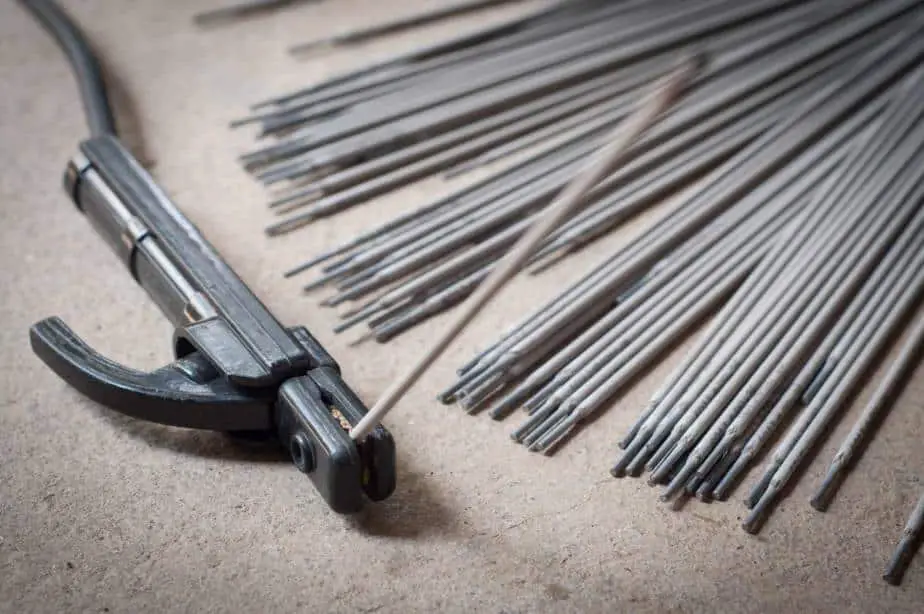
There are a variety of factors that influence which electrode is the best for the job.
The electrode you choose to weld with depends on:
- Tensile Strength
- Ductility
- Corrosion Resistance
- Base Metal (Steel, Aluminum, etc.)
- Current and Polarity
- The Weld Position
Tensile Strength
Tensile strength refers to the maximum amount of stress that a material can experience while being either stretched or pulled before breaking or failing, as defined by Santa Rosa Junior College.
It is often measured in pounds per square inch (psi).
The minimum tensile strength of the electrode must be matched to the minimum tensile strength of the base metal in order to avoid weld discontinuities such as cracking.
The welding electrodes used in most applications will be from either the 6000 or 7000 series. For example, an E6011 has a tensile strength of 60,000 psi. An E60 series welding rod will match the tensile strength of a mild steel according to Miller Welds.
Welding Position
You must also consider the welding position when choosing which electrode to use. The welding position refers to the direction in which the welding bead is laid out by the driller.
The most commonly-used welding rods are all-position welding rods. There are 4 major welding positions.
- Flat
- Horizontal
- Vertical
- Overhead
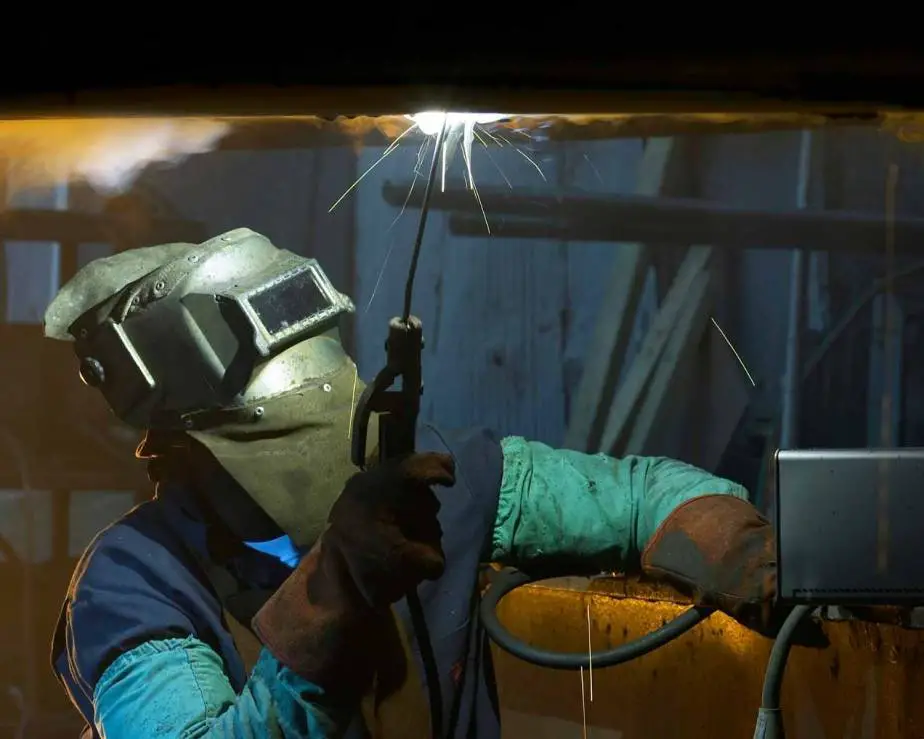
Most welding rods sold are all-position electrodes, but it still pays to look at the 4 or 5 digit number on the electrode when you are working with equipment that you didn’t purchase.
Coating Material
There are 8 different types of coatings used on welding rods that are included within the American Welding Society (AWS) classification system.
I touched base on this a little bit earlier. The coating material will determine which type of current, AC, DC+, or DC- that you will be using. As an example, high titania sodium and high titania potassium coatings are both compatible with AC current, but if you’re using DC- (direct current, negative polarity) then you will need to use a high titania sodium.
High Cellulose Sodium
High cellulose sodium welding rods can only be used with DC+ current. It is designed specifically for laying down a root bead on the inside of a pipe (see the lincoln electric post here).
The E6010 produces the most penetrating arc among all electrodes and is effective at welding through oil, dirt, rust and paint.
High Cellulose Potassium
High cellulose potassium welding rods are compatible with all types of current. The E6011 is a popular choice among those who are working with older metal that may also be rusty and dirty. It also has a deep, penetrating arc making it an effective choice for doing maintenance and repair work.
High Titania Potassium
High titania potassium welding rods produce arcs that are lighter and softer than the high cellulose sodium and potassium welding rods. As a result, they are suitable for use with thin materials such as clean, new sheet metal. They will also produce less splatter than other electrodes.
Low Hydrogen
The low hydrogen welding rods are classified by the AWS as electrodes with a last digit of 5,6 or 8. The low hydrogen electrodes have high deposition rates, according to Fabricating & Metalworking magazine.
The reason why you would want a low-hydrogen electrode is because they contain less moisture within the electrode coating. They are the primary choice in projects requiring an extra safety measure against weld defects and are most commonly used in Shield Metal Arc Welding (SMAW).
The E7018 electrode comes heavily recommended by Miller Welds for equipment that will be used often in extreme temperatures and shock-loading environments.
The E6016 electrode, consisting of a low hydrogen potassium coating, is recommended if you are working with carbon steel (see the Perdue University article here).
What Is the Easiest Rod to Weld With?
If you are just getting started arc welding or looking to teach someone else arc welding, look for an electrode that doesn’t produce too much splatter and compatible with both DC and AC currents.
The E6013 welding rod is recommended as the easiest rod to weld with for a number of reasons.
The E6013 electrode:
- Has a tensile strength of 60,000 psi: making it well-suited for use with mild steel
- Is an all-position electrode: this electrode can be used in the flat, horizontal, vertical and overhead positions
- Has a coating made of high titania potassium: compatible with AC and DC+ current
Most entry-level welding machines operate with an AC current. Finding a welding rod compatible with AC current is not difficult, as 6 of the 8 welding coating materials work with AC current. Another reason that E6013 electrodes are easy to use is that it produces a soft arc capable of producing less slag than the E6011 electrode.
The arc of the E6013 also doesn’t penetrate through the base metal quite as easily as the E6011 does, leaving some room for error for an operator who hasn’t yet gotten a feel for how closely the arc should be held from the base metal.
What Is the Best All-Around Welding Rod?
The E7018 welding rod is the most versatile electrode. This all-position electrode is coated with a low-hydrogen potassium and iron powder mixture.
The E7018 welding rod is versatile because it is:
- Compatible with AC, DC+, DC- currents
- Effective even with hard-to-weld metals
- The weld produced will be more uniform
- The produced weld can withstand extreme temperature fluctuations, including subzero temperatures
The E7018 electrode is also capable of forming crack-resistant welds in medium-carbon to high-carbon steels and welds in alloy steels that require a minimum tensile strength of 70,000 psi or greater. This electrode also offers the user with a high rate of deposition, approximately double that of the E7018 electrode. The slag at the weld bead, although heavy, is easy to remove.
There are many welding codes in industry that require a low-hydrogen electrode to be used so that hydrogen-assisted cracking is avoided.
What Is the Strongest Welding Rod?
The welding rod deemed to be the strongest weld really depends upon your definition of a strong welding rod. A strong welding rod may be run that produces the strongest bead or it may even be the electrode that is the hardiest out of the bunch in the shop.
If you are looking for a versatile welding rod that produces a strong bead, look no further than the E7018 rod. This electrode is known for producing weld beads so strong that it is even used to weld parts in power plants and offshore drill rigs.
The E7018 electrode is also frequently used in shipbuilding. The welds produced from this electrode are also resistant to damage from moisture and can withstand welding during cold temperatures.
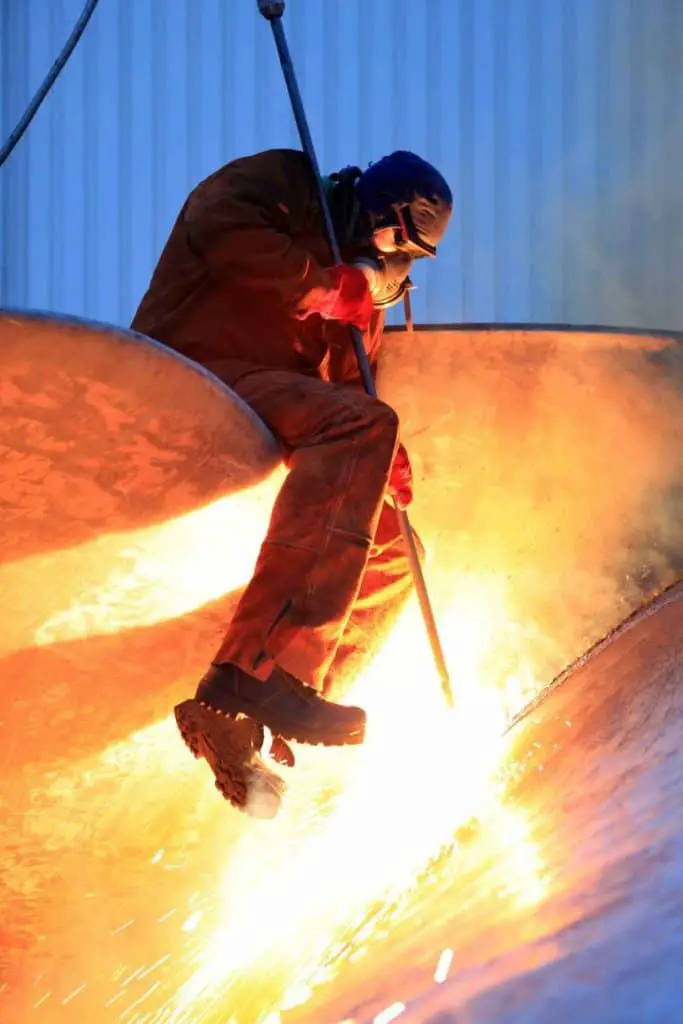
Unfortunately, the E7018 electrodes can be hard to keep in storage because they are low-hydrogen electrodes. They need to be stored in warm and dry places so that they do not become damaged.
The E6010 and E6011 electrodes are strong in their own right. The electrodes themselves are less easy to damage than the low-hydrogen electrodes mentioned above.
They are also the most commonly used welding rods when it comes to making everyday repairs on mild steel. These electrodes produce deep, penetrating arcs that cut through corroded and unclean materials like it’s butter. With the E6010 and E6011 electrodes, you need not worry about making sure that the base metal you are about to weld is clean.
What Is the Best Welding Rod for Cast Iron?
Cast irons belong to a family of iron-carbon alloys with a high carbon content, typically in the range of 2-4%.
They can be a challenge to weld because they are significantly less malleable than steel and wrought iron. They also do not stretch or deform when heated in the same way that other metals do.
When exposed to heat or stress, cast iron actually begins to crack.
The weldability of cast iron depends upon whether it is grey cast iron or white cast iron. Grey cast iron is actually possible to weld, while white cast iron has been deemed as nearly impossible to weld.
Nickel alloy electrodes, including the WeldingCity ENiFe-C1 Welding Rod, are the recommended electrodes for welding cast iron base metals.
The ENiFe-C1 electrode:
- Produces high strength weld deposits
- Is an all-position electrode
- Has a tensile strength of 84,000 psi
- Is compatible with DC+ and AC currents
The Nickel-55 electrode listed above is more affordable than the Nickel-99 electrode and is still well-suited for welding pieces of cast iron to each other, joining cast iron to mild steel and repairing castings.
It is recommended by pinnaclealloys.com that you preheat the cast iron before welding. Otherwise the cast iron can become subject to cracking. The preferred procedure is to preheat the cast iron at temperatures anywhere from 500 degrees F to 1200 degrees F, if at all possible.
What Is the Best Welding Rod for Aluminum?
Aluminum holds a reputation for being excessively difficult to weld. This is because the melting point of aluminum is 1,220 degrees Fahrenheit as compared to a melting point of steel which is 2,600 degrees Fahrenheit.
Aluminum also features an oxide layer that serves the purpose of protecting the aluminum from corrosion and abrasion. The melting point of the oxide layer of aluminum is 3,700 degrees Fahrenheit (see more at thefabricator.com).
Aluminum is difficult to weld because the tank oxide layer acts as an insulator during the welding process, as is described by The Fabricator magazine. If you are looking to weld an aluminum piece via stick welding, then the recommended welding rod is the E4043 aluminum-covered arc welding electrode.
The E4043 electrode:
- Has a tensile strength of 40,000 psi, matched to the ultimate tensile strength of Aluminum which is 45,000 psi
- Is designed to be used only with DC+ (direct current positive) current
Aluminum can only be welded using a strong, DC current welder, as is described here. This equipment provides hobby/DIY operators and small metal fabrication shops the capability to weld aluminum base metal.
What Is the Best Welding Rod for Stainless Steel?
The recommended welding rod for stainless steel is the E309L-16 Stainless Steel Welding Electrode.
The E309L-16 electrode:
- Has a tensile strength of 59,500 psi
- Has a flux coating that provides smooth arc transfer
- Produces slag that is easy to remove
- Can be used in all welding positions expect for vertical down
- Compatible with AC and DC- currents
The E309L-16 electrode is typically used to join stainless steel to mild or low alloy steel. These welding rods are far and away the most commonly recommended welding rods for stainless steel, but they do come with a learning curve, as is described in this video.
When you use this welding rod, you need to make sure that the base metal is clean. Otherwise, moisture in the weld area can lead to porosity that can cause the weld to weaken. Stainless steel electrodes absolutely need to be stored in a warm and dry environment. Keep them stored in the original container they came in if you can.
What Is the Best Welding Rod for Cast Steel?
While cast-iron often contains 2% carbon, cast steel will contain 0.1-0.5% carbon. The welding rod you use for cast steel should be one that has high tensile strength.
E8018-C3 is the recommended welding rod if you are welding cast steel. This welding rod is suited for welding metals with high tensile strength.
The E8018-C3:
- Is compatible with AC and DC- currents
- Is an all-position electrode
- Produces low spatter and it is easy to remove slag
- Has a High Rate of Deposition
This welding rod is also designed for applications needing 1% nickel.
What Is the Best Welding Rod for Mild Steel?
Mild steel is often referred to as “low carbon steel”. Mild steel is not an alloy and therefore does not contain a large amount of any element other than iron.
Mild steel is typically much more malleable and weldable than other types of steel. It also has a lower tensile strength than high carbon and alloy steels. The tensile strength of mild steel is around 63,800 psi.
Any welding rod in the 6000 series of electrodes is suitable for welding mild steel. More specifically, the E6011 electrode is the recommended electrode for welding mild steel.
The E6011 electrode:
- Has a tensile strength of 60,000 psi
- Is compatible with AC and DC+ current
- Is an all-position electrode
- Is considered a fast-freeze electrode
The E6010 electrode is also a fine candidate for welding mild steel, but it can only be used with DC+ current. Many entry-level welding machines carry AC current, making the E6011 electrode slightly more useful in this case.
Both the E6010 and E6011 are classified as “deeply penetrating” welding rods, meaning that the fusion at the end of the welding rod extends further into the base metal than some of the other welding rods.
The only potential downside is the fact that the E6011 and E6010 welding rods are also both considered “high hydrogen” electrodes. This means that the weld produced by these electrodes will more readily be subject to hydrogen-assisted cracking.
However, the E6011 and E6010 are better able to penetrate the base metal than the E7018 electrode. They also come with less stringent storage requirements.
What Is the Best Welding Rod for Galvanized Steel?
The welding of galvanized steel comes with more stringent safety requirements than welding other steels. This is because the protective zinc coating-aka the “galvanizing layer”- is melted off quite easily during the process.
Although non-toxic and non-carcinogenic, the fumes from Zinc Oxide may cause the welder to experience a short term illness known as “metal fume fever” (read more about that here). This short-term illness is marked by symptoms similar to any other stomach flu, and it doesn’t sound like much fun.
The American Galvanizers Association suggests removing the galvanizing layer from the proposed weld zone before you proceed to weld. You may find it easier to avoid the fumes this way.
The E6011 has also been deemed an excellent electrode for the purpose of welding galvanized steel (see more about that here). This is due to its penetrating ability and its compatibility with AC current, which many entry-level welding machines have.
However, in a professional setting where you are welding galvanized piping, you may find the E7018 electrode more suitable if you are using stick welding.
Using the E7018 electrode:
- Reduces the opportunity for moisture to damage the weld
- Is a low spatter electrode
- Is so reliable that it has been utilized to weld steel structures in power plants and offshore rigs
The fact that the E7018 electrode doesn’t produce much spatter makes it well-suited for welding a piece of galvanized steel after you have removed the galvanized steel.
After the weld has been completed, you will have to reapply a protective layer at the weld zone to make up for the protective coating that you removed. This will be a lot easier if you don’t have to remove very much slag during the process.
Please don’t forget the importance of welding rod storage!
